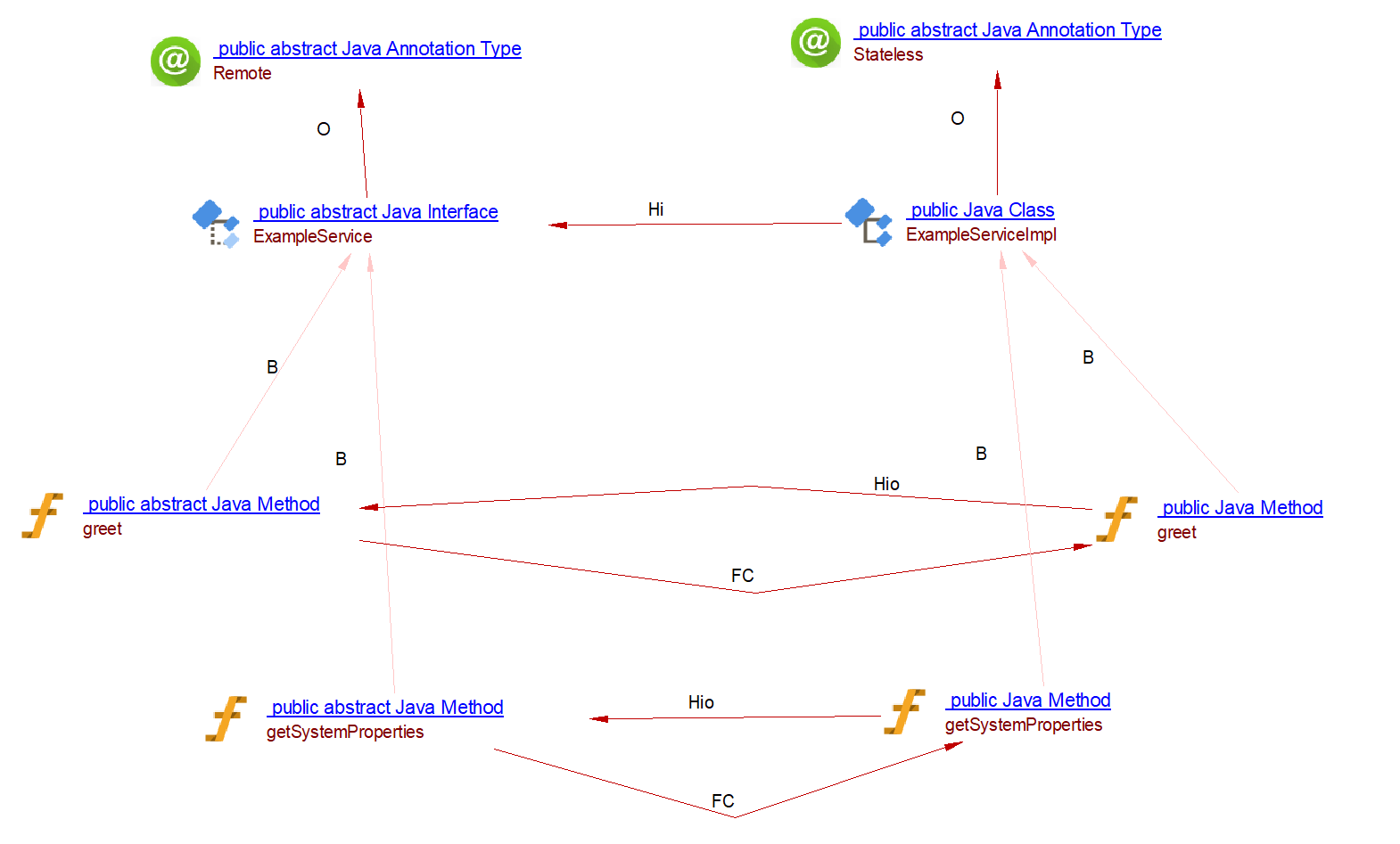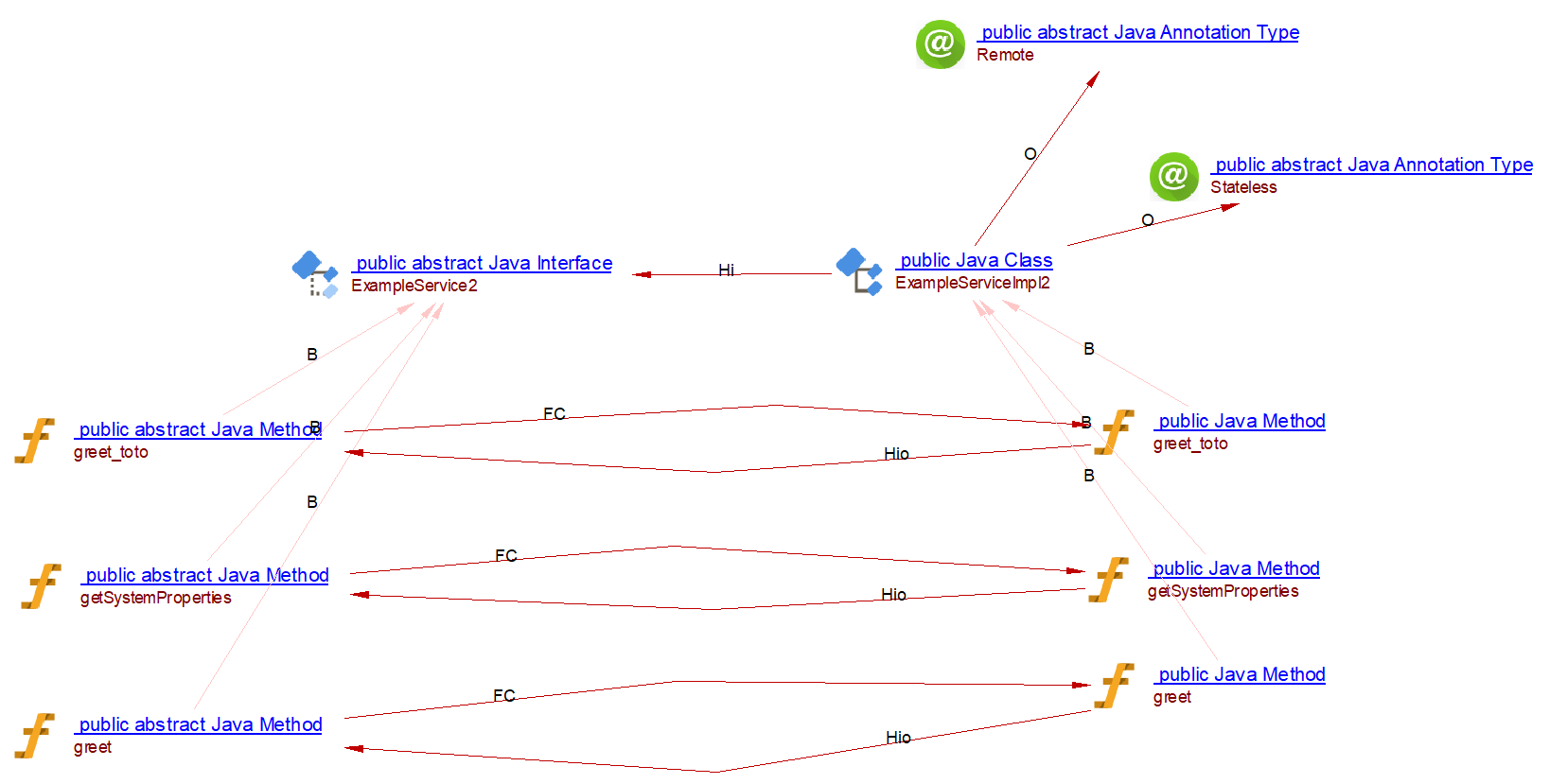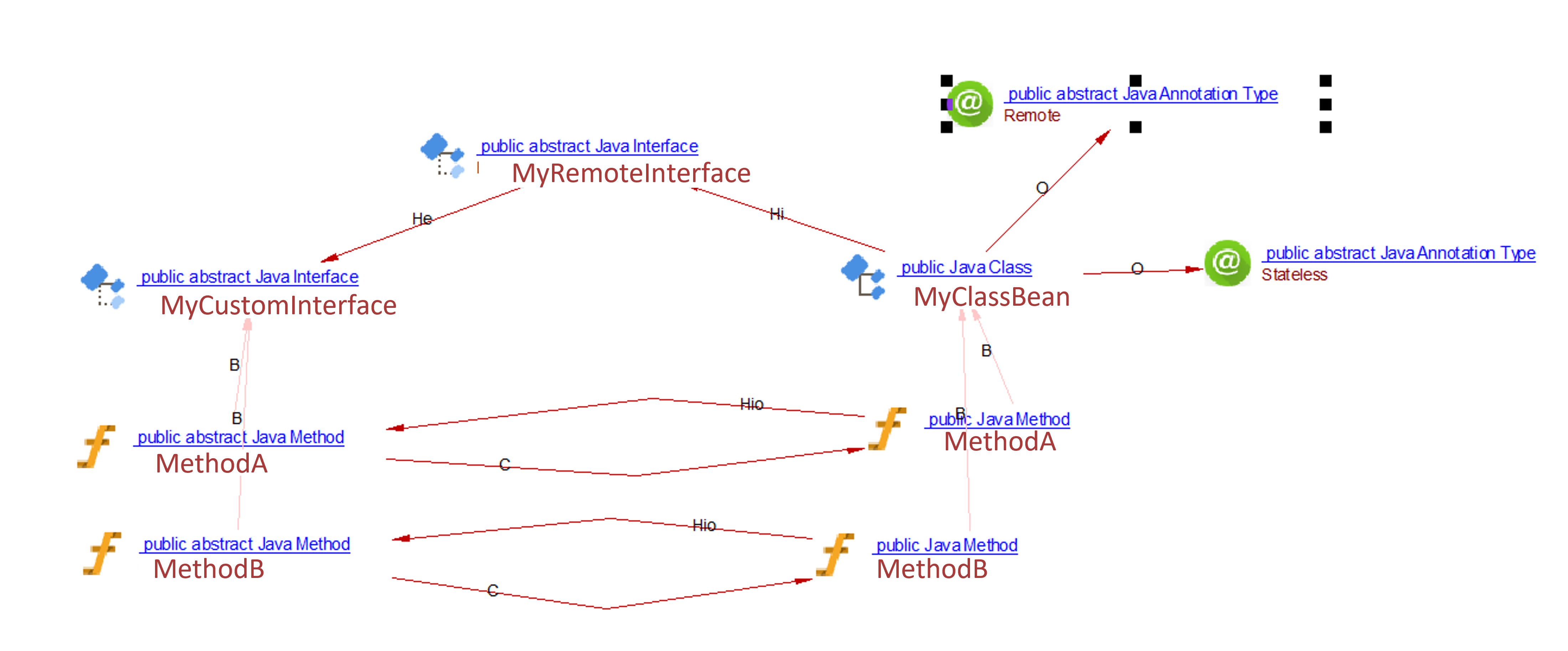EJB - 1.0
Extension ID
com.castsoftware.ejb
What’s new?
Please see EJB - 1.0 - Release Notes for more information.
Description
This extension provides support for EJB (Enterprise Java Beans).
In what situation should you install this extension?
If your JEE application contains source code which uses EJB and you want to view these object types and their links with other objects, then you should install this extension. The main purpose of this extension is to enable linking between matching methods of Java Remote Interfaces to Bean Java Classes based on information provided in the ejb-jar.xml deployment descriptor file or via annotations.
Supported EJB releases
| EJB release | Supported | Notes |
|---|---|---|
| EJB ≤ 2.x (via deployment descriptor ejb-jar.xml ) | ✔️ | This extension handles links between Java Remote Interfaces to Beans operated by the ejb-jar.xml |
| EJB ≥ 3.x (via annotations) | ✔️ | - |
Function Point, Quality and Sizing support
Feature |
Supported? |
Comments |
|---|---|---|
Function
Points |
Indicates whether the extension provides support for OMG Function Point counting and Transaction Risk Index. | |
| Quality and Sizing | Indicates whether the extension can measure size and whether a minimum set of Quality Rules exist. |
AIP Core compatibility
| CAST AIP release | Supported |
|---|---|
| 8.3.x |
Download and installation instructions
For JEE applications using Enterprise Java Beans (EJB), the extension will be automatically installed by CAST Console:

What results can you expect?
| Supported package | Supported API Methods |
|---|---|
| javax.ejb.* | javax.ejb.Remote javax.ejb.Stateless javax.ejb.Stateful javax.ejb.EJBObject javax.ejb.SessionBean |
| jakarta.ejb.* | jakarta.ejb.Remote jakarta.ejb.Stateless jakarta.ejb.Stateful jakarta.ejb.EJBObject jakarta.ejb.SessionBean |
Basic support for Remote to Bean communication via the ejb-jar.xml deployment descriptor file (EJB ≤ 2.x)
Given the following ejb-jar.xml file:
<?xml version="1.0" encoding="UTF-8"?>
<ejb-jar version="3.0" xmlns="http://java.sun.com/xml/ns/javaee" xmlns:xsi="http://www.w3.org/2001/XMLSchema-instance" xsi:schemaLocation="http://java.sun.com/xml/ns/javaee http://java.sun.com/xml/ns/javaee/ejb-jar_3_0.xsd">
<display-name>MyEJB </display-name>
<enterprise-beans>
<session id="MyFacade">
<ejb-name>MyFacade</ejb-name>
<home>*.MyFacadeHome</home>
<remote>*.MyFacade</remote>
<ejb-class>*.MyFacadeBean</ejb-class>
<session-type>Stateless</session-type>
<transaction-type>Bean</transaction-type>
</session>
</enterprise-beans>
<ejb-client-jar>AWDControllerEJBClient.jar</ejb-client-jar>
</ejb-jar>
Assuming that the java interface *.MyFacade and the java class
*``.MyFacadeBean are declared correctly, the extension will produce
callLink links between matching methods as follows:

Basic support for Remote to Bean communication via annotations (EJB ≥ 3.x)
Case 1: When both the Interface and Class are annotated
Given the following code snippets from the annotated interface :
package com.tuto.ejb;
import java.util.Map;
import javax.ejb.Remote;
@Remote
public interface ExampleService {
public String greet(String name);
public Map<Object, Object> getSystemProperties();
}
And the annotated class:
package com.tuto.ejb;
import java.util.HashMap;
import java.util.Map;
import javax.ejb.Stateless;
@Stateless
public class ExampleServiceImpl implements ExampleService {
@Override
public String greet(String name) {
return "Hello " + name + "!";
}
@Override
public Map<Object, Object> getSystemProperties() {
return new HashMap<>(System.getProperties());
}
}
…the extension will create the following callLink:

Case 2: When only the class is annotated
Given the following code snippets from the annotated interface:
package com.tuto.ejb;
import java.util.Map;
public interface ExampleService2 {
public String greet(String name);
public Map<Object, Object> getSystemProperties();
public String greet_toto(String name);
}
And the annotated class:
package com.tuto.ejb;
import java.util.HashMap;
import java.util.Map;
import javax.ejb.Stateless;
import javax.ejb.Remote;
@Remote(ExampleService2.class)
@Stateless
public class ExampleServiceImpl2 implements ExampleService2 {
@Override
public String greet(String name) {
return "Hello " + name + "!";
}
@Override
public Map<Object, Object> getSystemProperties() {
return new HashMap<>(System.getProperties());
}
@Override
public String greet_toto(String name) {
return "Hello Toto !";
}
}
…the extension will create the following callLink:

Case 3: Extension of the Remote Interface with the business logic
Following the same pattern as in case 2, except that methods are declared in an inherited interface of the Remote Interface:
